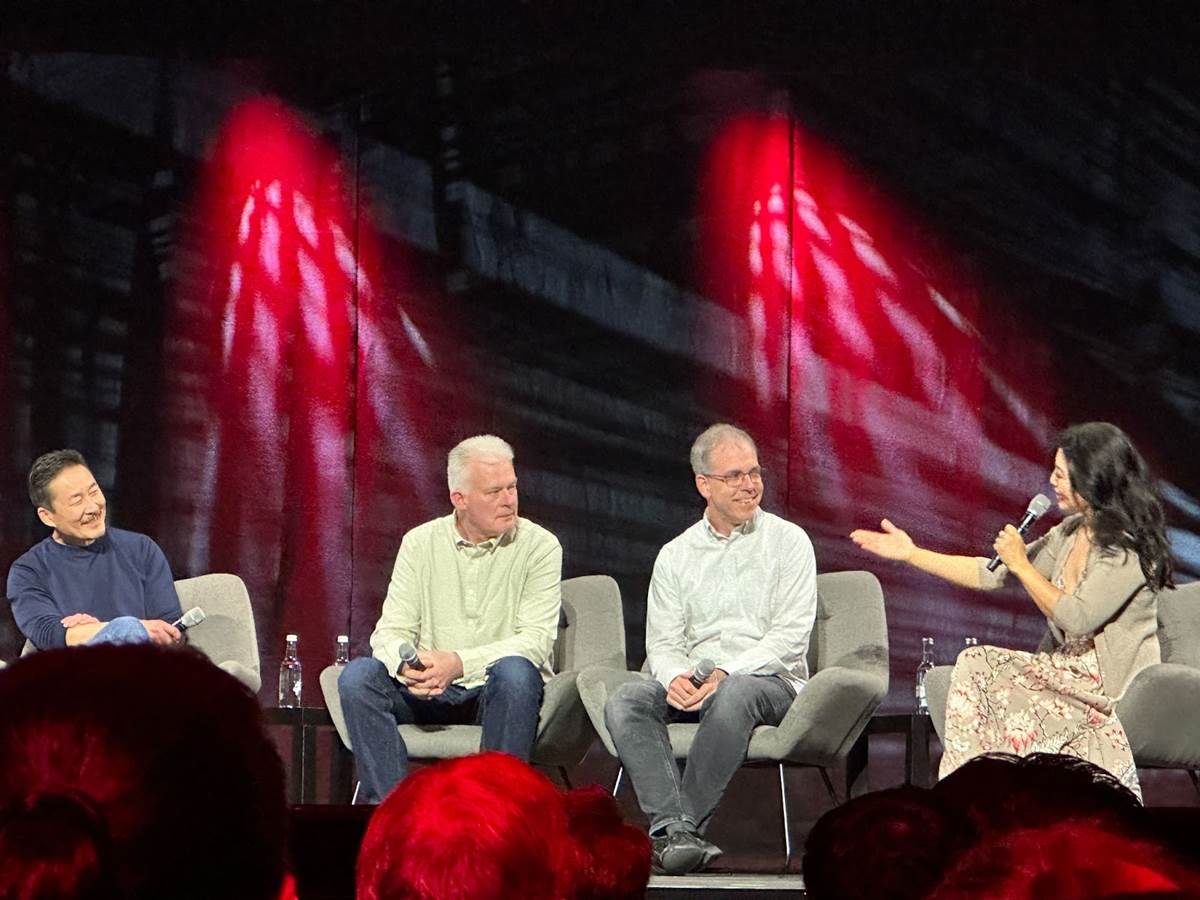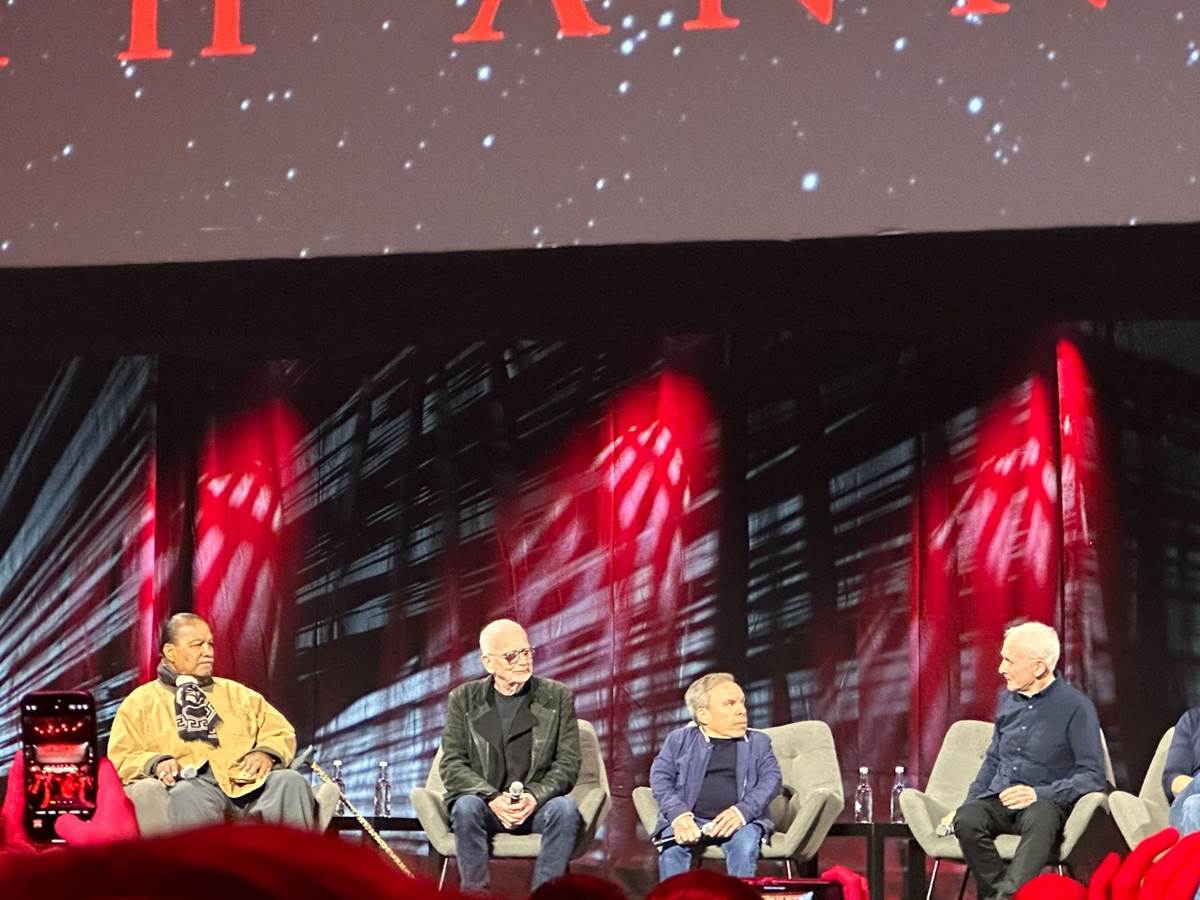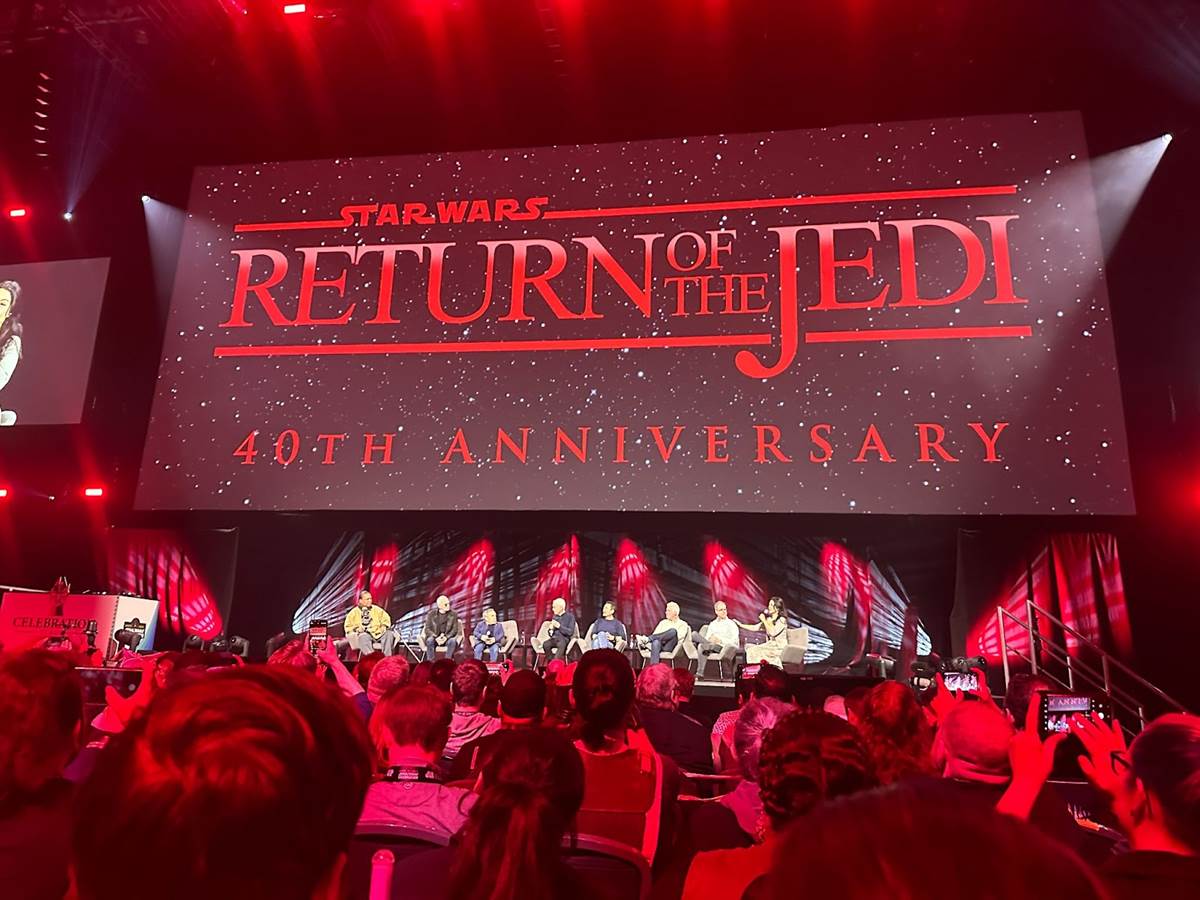Star Wars Celebration Europe honored the milestone anniversary of the last film in the original trilogy with a panel titled “40 Years of Return of the Jedi,” moderated by Ming-Na Wen. The big news out of the panel was a theatrical re-release of Star Wars: Return of the Jedi on April 28th, along with a poster reveal (attendees were given a copy of the poster as a parting gift). Split into two parts, the first half of the panel focused on how the filmmaking techniques pioneered on Return of the Jedi inspired a new generation of artists to continue to break boundaries. The second half brought along some of the film’s surviving cast members (Mark Hammill and Harrison Ford both sent video messages, but did not appear in person).
Doug Chiang (VP & Executive Creative Director), Rob Bredow (SVP, Chief Creative Officer), and Neal Scanlan (Creature and Special Makeup Effects Supervisor) were the first three guests, who started by sharing their memories of seeing Return of the Jedi on the big screen as young adults. Doug also took a moment to honor Norm Reynolds, a production designer who helped define the look of Star Wars who passed away earlier this week.
One of the filmmaking innovations from Return of the Jedi was pre-visualization, done on video using Kenner toys to help determine how to shoot the speeder bike chase. Rob showed a contrast between this original technique and what they’re able to do now virtually on shows like The Mandalorian. The Millennium Falcon was also brought up to speed on Solo: A Star Wars Story where 20 script pages were set in the cockpit. A wrapped screen allowed the actors to see the ship go to hyperspace, a precursor to the volumetric stage in use on Star Wars shows today.
Neal talked about how Return of the Jedi advanced the puppeteering innovations started by Ray Harryhausen. Jabba the Hutt presented new challenges, with multiple performers inside the puppet working in choreographed synchronization to bring him to life. Advances made on Jabba directly helped make the sea cows (Thala-sirens) in The Last Jedi possible, each requiring two performers to be placed inside for the day on sea cliffs during low tide.
Doug shared one of George Lucas’ techniques for selecting characters in Return of the Jedi, sharing how the visionary would throw out a celebrity or character from another project as a guide. In the case of Jabba the Hutt, it was actor Sydney Greenstreet (Casablanca) whose essence George Lucas tasked designers to be inspired by. When Jon Favreau gave his design edict for Grogu, it felt somewhat similar, with Doug told to think of him like a puppy. Doug and his team also got to expand the location of Jaba’s Palace, looking back on Norm Reynolds’ designs to see if anything was left unused. Sadly, there wasn’t much to go on, so he and his team of artists had to think like George Lucas when it came to designing Jabba’s bedroom, kitchen, and hangar.
The four original cast members in attendance each received a standing ovation as they took the stage: Anthony Daniels (C-3PO), Warwick Davis (Wicket), Ian McDiarmid (Emperor Palpatine), and Billy Dee Williams (Lando Calrissian). Billy Dee didn’t have a lot to say, but did announce that he has a memoir in the works that will be called What Have We Here: Portraits of My Life. This sparked mentions of books by the other panelists; I Am C-3PO – The Inside Story by Anthony Daniels and Size Matters Not: The Extraordinary Life & Career of Warwick Davis by Warwick Davis. When Ian McDiarmid was asked where his memoir is, he joked “I can’t write, I can barely read.”
Asked to recall their first day on set, Anthony Daniels brought up the difficulty of shooting a Tattooine sandstorm sequence that was ultimately cut from the film. The sequence was shot inside a soundstage where sand was set up in front of fans. When they started blowing, none of the actors could see anything. And Anthony recalled that it took the crew several days to clean the sand up so that the soundstage could be used for other scenes.
Warwick Davis was a huge fan of both Star Wars and The Empire Strikes Back, so meeting C-3P0 for the first time was a bit of an eye-opening experience as he hadn’t given much thought to the squishy human being underneath all that gold plating. At just 11 years old, Warwick was younger than the average Ewok, most of whom were tired after every take in in the California Redwoods, and he was always eager for another take or an additional scene. Warwick and Anthony also reminisced about how nobody was fooled by the production’s fake title “Blue Harvest,” which was said to be a horror film. But when passersby saw space teddy bears and a familiar-looking golden droid, the fake title was quickly ignored.
For Ian McDiarmid, one of his most cherished memories about making Return of the Jedi wasn’t from the set, but from Abbey Road. George Lucas invited Ian to sit in and watch John Williams composing the score, and he’s still in awe of the maestro’s level of perfection. After recording several queues, John Williams and the lead for each section would join George Lucas to listen back to a take. Ian recalls George being satisfied, while John Williams wouldn’t let a single note be out of place in his final recordings. But while a tough perfectionist, Ian remembers John Williams as also being very patient and charming.
At the end of the panel, and following the news that Star Wars fans will have a chance to celebrate the 40th anniversary of Return of the Jedi with a theatrical re-release on April 28th, the crowd at Star Wars Celebration Europe rose to their feet to give four of the film’s stars and three production designers inspired by it a standing ovation. Stay tuned to Laughing Place for more coverage from Star Wars Celebration.



